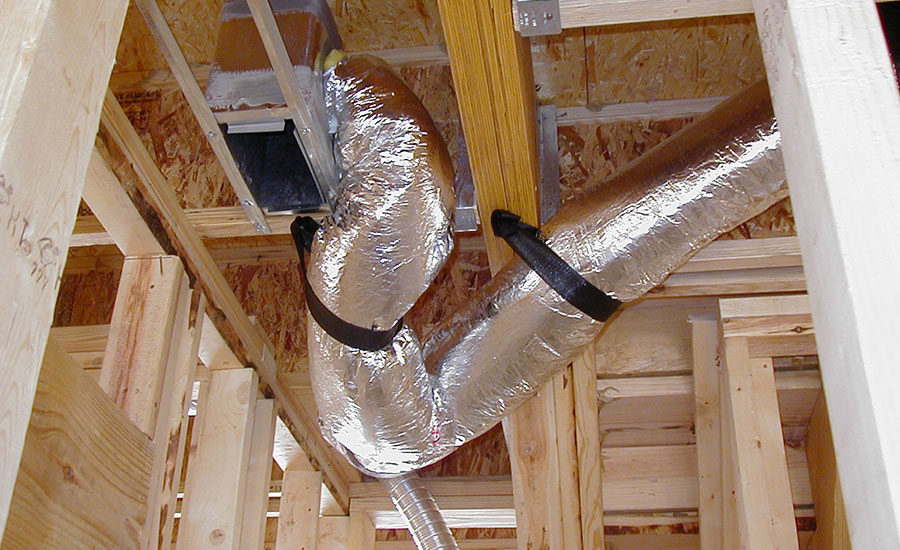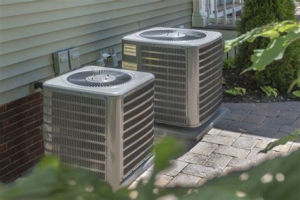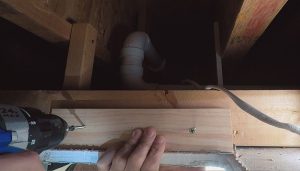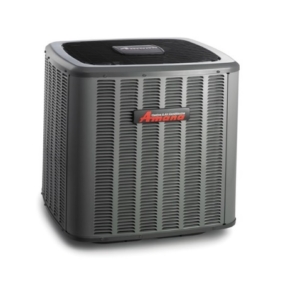The Cost of Duct Cleaning: Is it Worth the Investment?
The Importance of Duct Cleaning: What You Need to Know
Duct cleaning is a process to assist with maintaining the air quality in your home or business. Over time, ducts can become clogged with dirt, dust, mold, and other pollutants that can negatively impact your health and the efficiency of your heating and cooling systems. In this article, we’ll discuss what duct cleaning is, the benefits of duct cleaning, the types of ducts that can be cleaned, signs that your ducts need cleaning, and how to hire someone to clean your ducts.
What is Duct Cleaning?
Duct cleaning is the process of removing contaminants from heating, ventilation, and air conditioning (HVAC) systems. This includes cleaning the ducts, registers, grilles, and other components of the system. The process typically involves using specialized tools and equipment to dislodge and remove the contaminants, such as high-powered vacuums and air compressors.
The Benefits of Duct Cleaning
There are several benefits to having your ducts cleaned regularly, including:
- Improved Air Quality: Duct cleaning can help remove contaminants from the air, such as dust, mold, and pet dander, which can lead to respiratory problems.
- Enhanced Energy Efficiency: A clean HVAC system can operate more efficiently, which can reduce energy consumption and lower utility bills.
- Longer Equipment Lifespan: Regular duct cleaning can help extend the lifespan of your HVAC system by reducing wear and tear on the equipment.
- Improved Comfort: A clean HVAC system can help maintain consistent temperatures and airflow throughout your home or business, leading to increased comfort.
- Reduced Odors: Duct cleaning can help remove odors caused by mold, pet dander, and other contaminants, leading to a fresher-smelling environment.
Air Quality Testing
If you are concerned with the air quality in your home or building you may want to seek out an environmental service like air quality testing. Home inspectors typically offer this service as an ancillary to a home inspection. In South Florida, we have a local lab that can offer the service and get same-day results in many cases. Check your local area for your options.
Air quality testing is a process by which a home inspector tests the quality of the air inside a home. The primary goal of air quality testing is to determine if any harmful contaminants in the air could be detrimental to the health and well-being of the occupants.
A home inspector may conduct air quality testing during a home inspection to identify any potential issues with indoor air quality. The testing may involve taking air samples from various areas of the home, such as the living room, bedroom, basement, and attic.
The air samples are typically analyzed in a laboratory to identify the presence of various contaminants, such as mold and volatile organic compounds (VOCs). The laboratory will provide a report of the findings, which the home inspector will review and interpret.
The results of the air quality testing will help the home inspector identify any potential issues with the home’s indoor air quality and recommend solutions to address them. For example, if high levels of mold are found, the home inspector may recommend that the mold be removed and the underlying moisture issue be addressed.
Overall, air quality testing is an important aspect of a home inspection, as it helps to ensure that the home’s occupants are breathing clean and healthy air. If you’re concerned about the indoor air quality of a home you’re considering purchasing, it’s a good idea to ask your home inspector about air quality testing and whether it’s included in their inspection services.
Types of Ducts That Can Be Cleaned
Several types of ducts can be cleaned, including:
- Residential Ducts: These are the ducts that are found in homes and apartments. They typically run through walls, floors, and ceilings and connect to the HVAC system.
- Commercial Ducts: Commercial ducts are larger than residential ducts and are designed to accommodate more airflow. They are typically found in office buildings, schools, and hospitals.
- HVAC System Ducts: The HVAC system is the heart of the heating and cooling system, and the ducts are responsible for distributing the conditioned air throughout the building. Cleaning these ducts is essential for maintaining good air quality.
- Dryer Vents: Dryer vents are often overlooked when it comes to duct cleaning, but they are just as important as the other types of ducts. A clogged dryer vent can increase the risk of a house fire and reduce the efficiency of your dryer.
There are certain types of ducts materials that cannot be cleaned using traditional duct cleaning methods. Here are some examples:
- Flexible Ducts: Flexible ducts are typically made from a plastic material and are prone to tearing and puncturing. As a result, they are not suitable for traditional duct cleaning methods, as the high-powered vacuum and compressed air can cause damage.
- Insulated Ducts: Insulated ducts are lined with a layer of insulation, which can become damaged or dislodged during the duct cleaning process. As a result, these types of ducts may not be suitable for traditional duct cleaning methods.
- Duct Board: Duct board is a type of ductwork that is made from compressed fiberglass and is often used in commercial buildings. While it can be cleaned, it is typically not recommended due to the potential for damage to the material.
- Asbestos Ducts: Asbestos was a common material used in ductwork prior to the 1970s. However, due to the health risks associated with asbestos exposure, asbestos ducts should not be cleaned. If asbestos is found in ductwork, it should be removed and replaced by a professional asbestos abatement company.
Signs That Your Ducts Need Cleaning
There are several signs that your ducts may need cleaning, including:
- Reduced Airflow: If the airflow from your vents seems weak or diminished, it could be a sign that your ducts are clogged.
- Unusual Odors: If you notice strange or unpleasant odors coming from your vents, it could be a sign that there is mold or other contaminants in your ducts.
- Visible Mold Growth: If you see mold growing around your vents or on the ductwork, it’s a clear indication that your ducts need cleaning.
- Dust and Debris Buildup: If you notice an excessive amount of dust or debris around your vents or on your furniture, it could be a sign that your ducts are dirty and need cleaning.
- Increased Energy Bills: If your energy bills have been increasing without any change in usage, it could be a sign that your HVAC system is working harder than it needs to due to clogged ducts.
How to Hire Someone to Clean Your Ducts
Don’t get scam for duct cleaning. Here are some tips for finding a reputable and trustworthy company:
When looking for a duct cleaning service, it’s important to choose a company that offers a full cleaning of the entire heating and cooling unit. Don’t settle for just duct cleaning – ensure that the entire system is thoroughly cleaned.
- Before hiring a company, it’s important to get and check references from other customers in your area to find out if they were satisfied with the service they received. Reputable companies should be able to provide a free inspection and a written estimate.
- Be cautious of gimmicks such as “whole-house specials” that offer a very cursory vacuum of a few ducts. Quality duct and HVAC cleaning should cost upwards of $500, take several hours with sophisticated equipment, and involve multiple workers.
- Check to see if the cleaning company is certified by the National Air Duct Cleaners Association and has relevant licenses and insurance. Make sure the company follows the guidelines of the North American Insulation Manufacturers Association.
- A reputable company will offer a complete visual inspection of the HVAC system and ductwork, either in person or by remote camera. Before paying, make sure every single duct is clean, and insist on an inspection of the inside of the HVAC unit.
- Be aware that intake ducts are likely to be dirtier than supply ducts since they often don’t have filters. Ensure that any “before-and-after” photos are of the supply ducts, where it’s most important that the air is clean.
- Avoid using sprayed sealants, biocides, anti-microbial treatments, or other potentially harmful chemicals inside air ducts, as these can cause more harm than good to your health. No chemicals are currently registered with the EPA for use inside ductwork. Also, do not use steam or moisture to clean ducts.
- Research potential duct cleaning companies: Start by researching companies that specialize in duct cleaning in your area. Look for companies that have good reviews and ratings from previous customers.
- Check for proper certification and insurance: Make sure that the company you choose is properly certified and insured. This will give you peace of mind knowing that the work will be done safely and professionally.
- Get a written estimate: Before hiring a company, get a written estimate that includes the scope of the work, the cost, and any warranties or guarantees.
- Ask for references and reviews: Ask the company for references and read reviews from previous customers. This will give you an idea of the quality of their work and their level of customer service.
- Verify the cleaning process and equipment used: Ask the company about their cleaning process and the equipment they use. Make sure that they use high-quality equipment and follow industry standards for duct cleaning.
- Confirm the work guarantee and follow-up service: Make sure that the company offers a work guarantee and follow-up service in case there are any issues after the cleaning is done.
Conclusion
Duct cleaning is an important aspect of maintaining good air quality and energy efficiency in your home or business. By understanding the benefits of duct cleaning, the types of ducts that can be cleaned, signs that your ducts need cleaning, and how to hire a reputable company in the Miami area, you can ensure that your HVAC system is working properly and that your indoor air quality is safe and healthy. If you haven’t had your ducts cleaned in a while, consider hiring a professional duct cleaning company today.
Here is a link to the United States Environmental Protection Agency (EPA) website:
On the EPA website, you can find information about air quality, water quality, land pollution, and other environmental issues. The site also provides resources for individuals, businesses, and communities to help them take action to protect the environment and promote sustainability.
I hope this has been helpful. If you have additional questions and want to get in contact with GGR Home Inspections please send us a note, text, or call.







